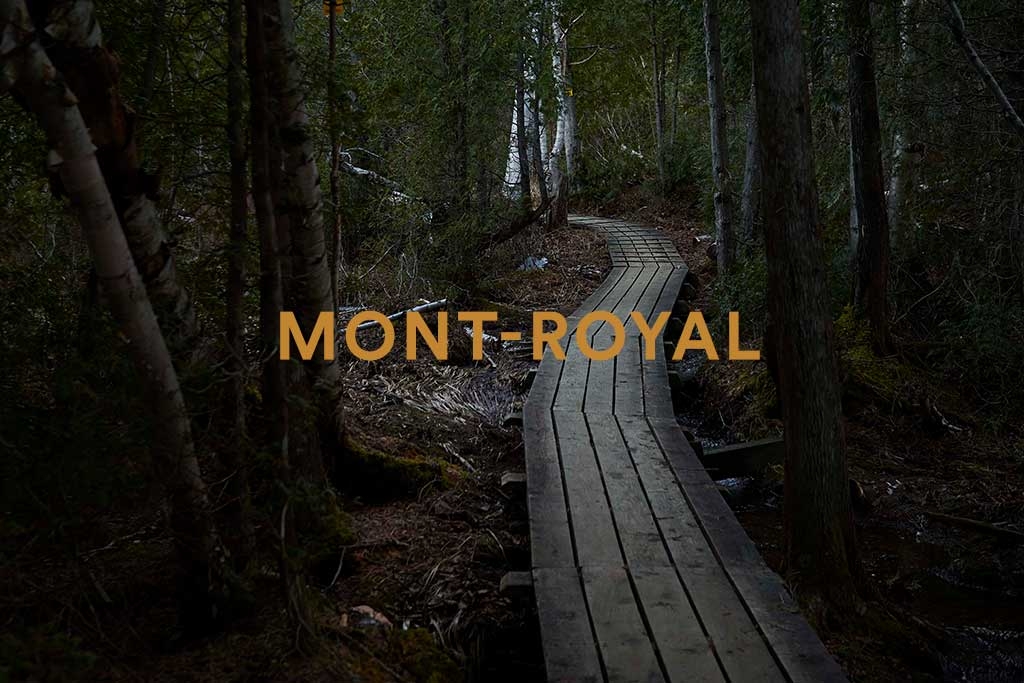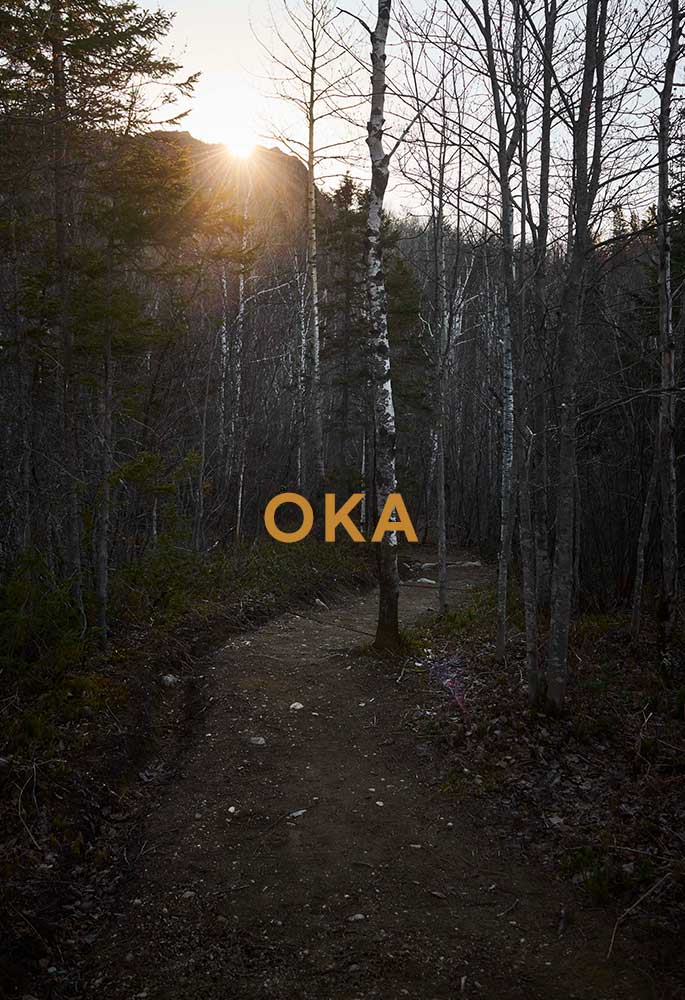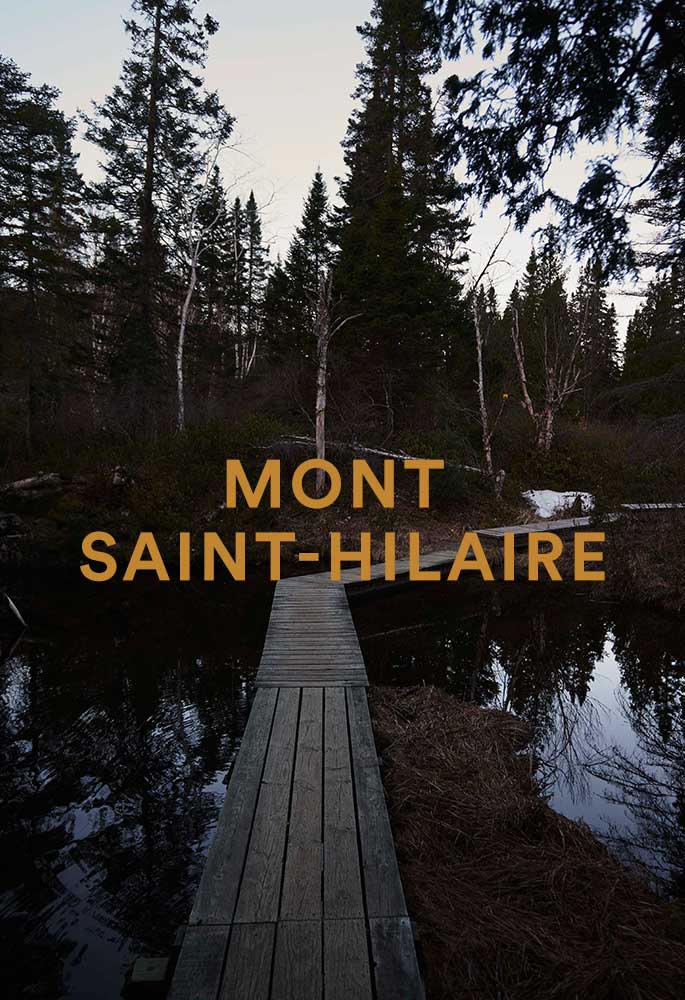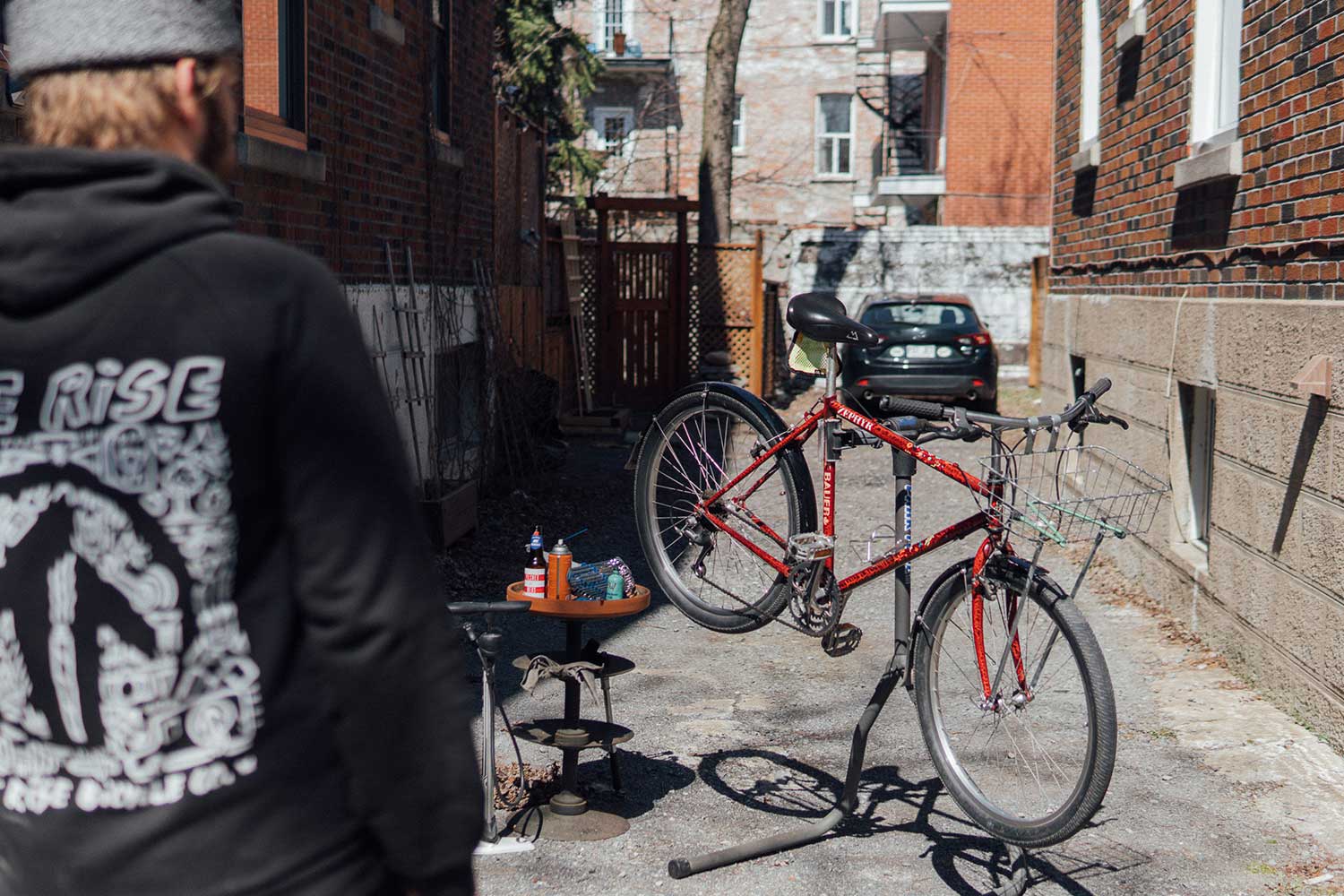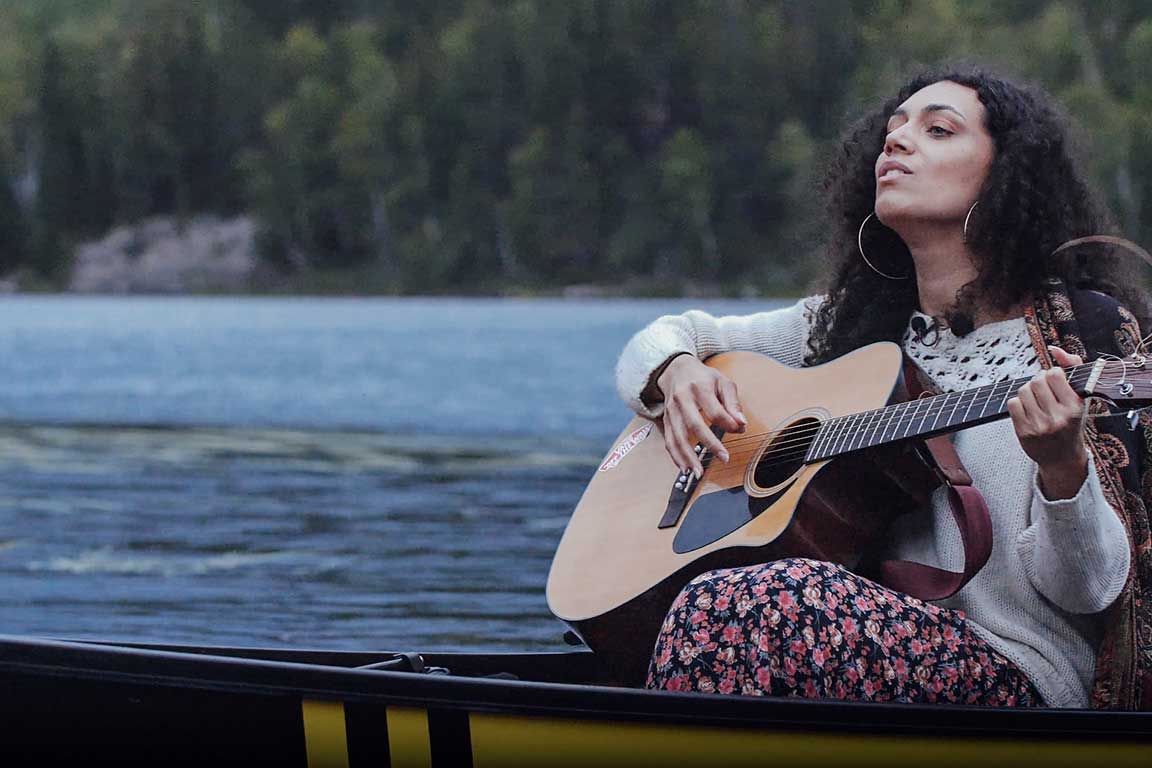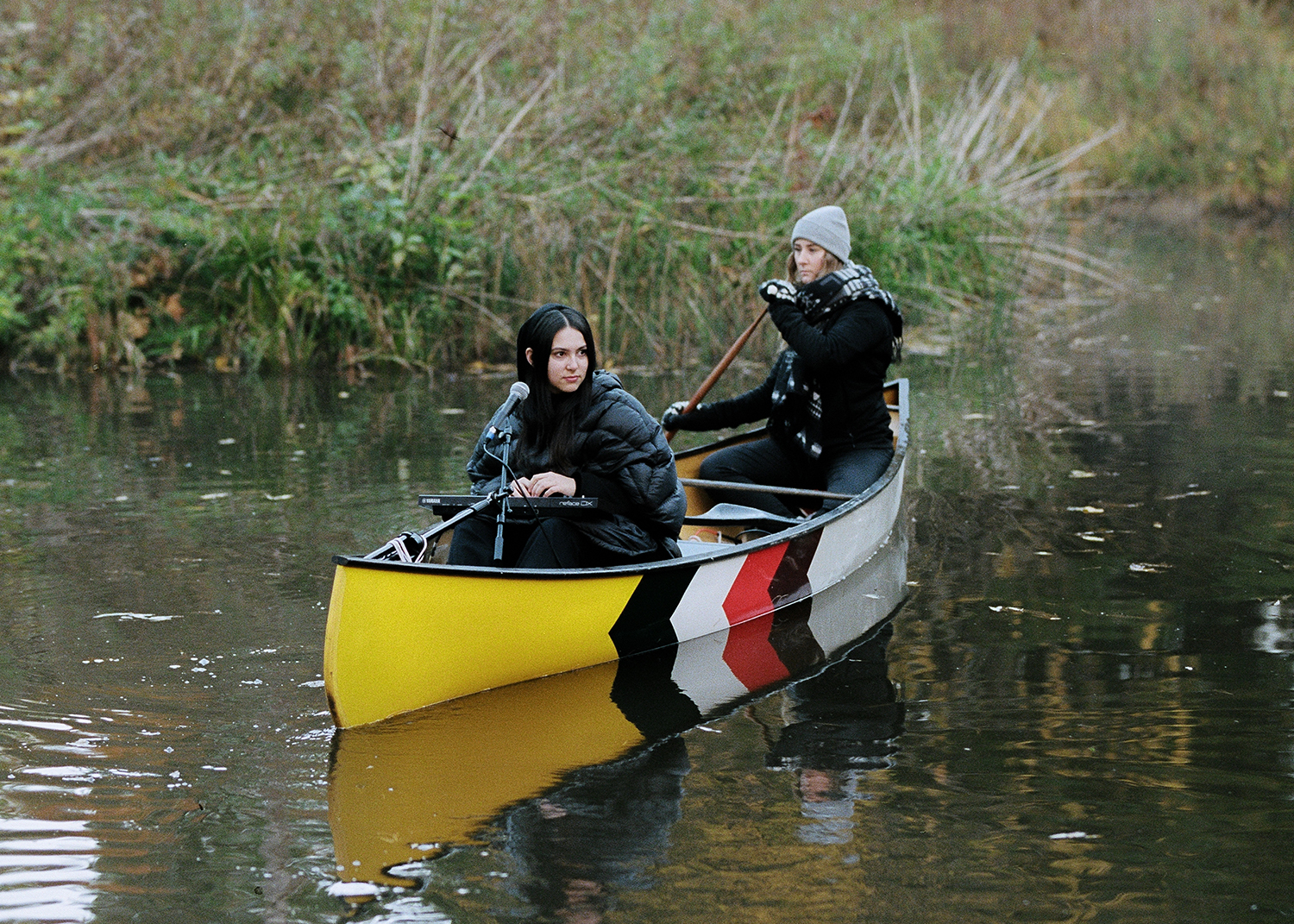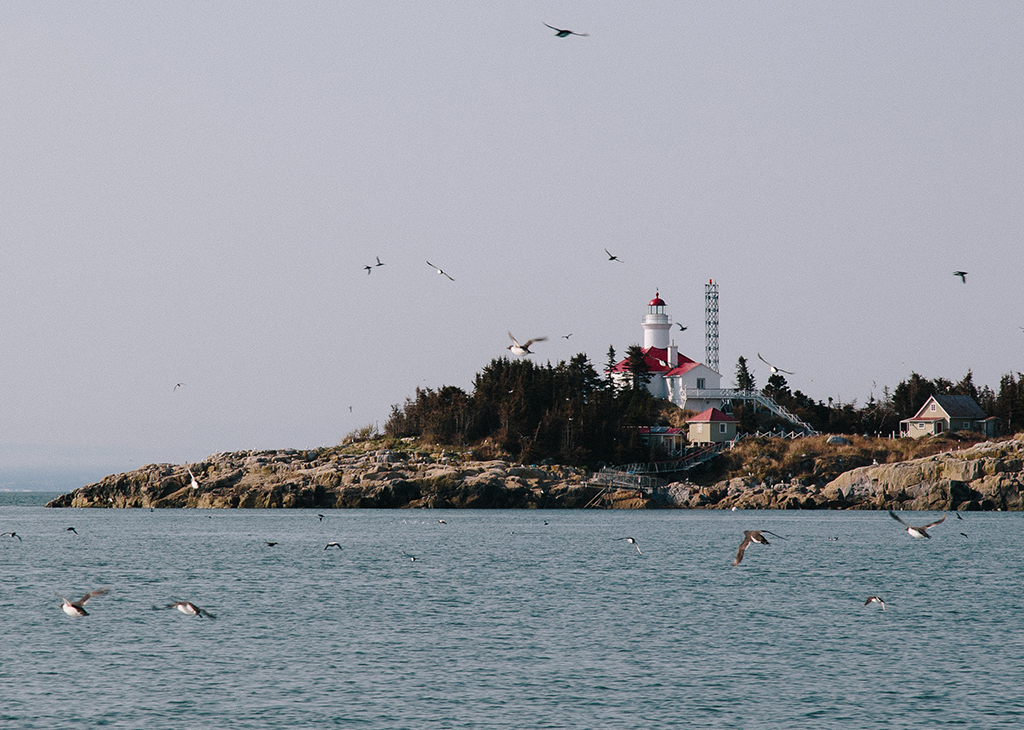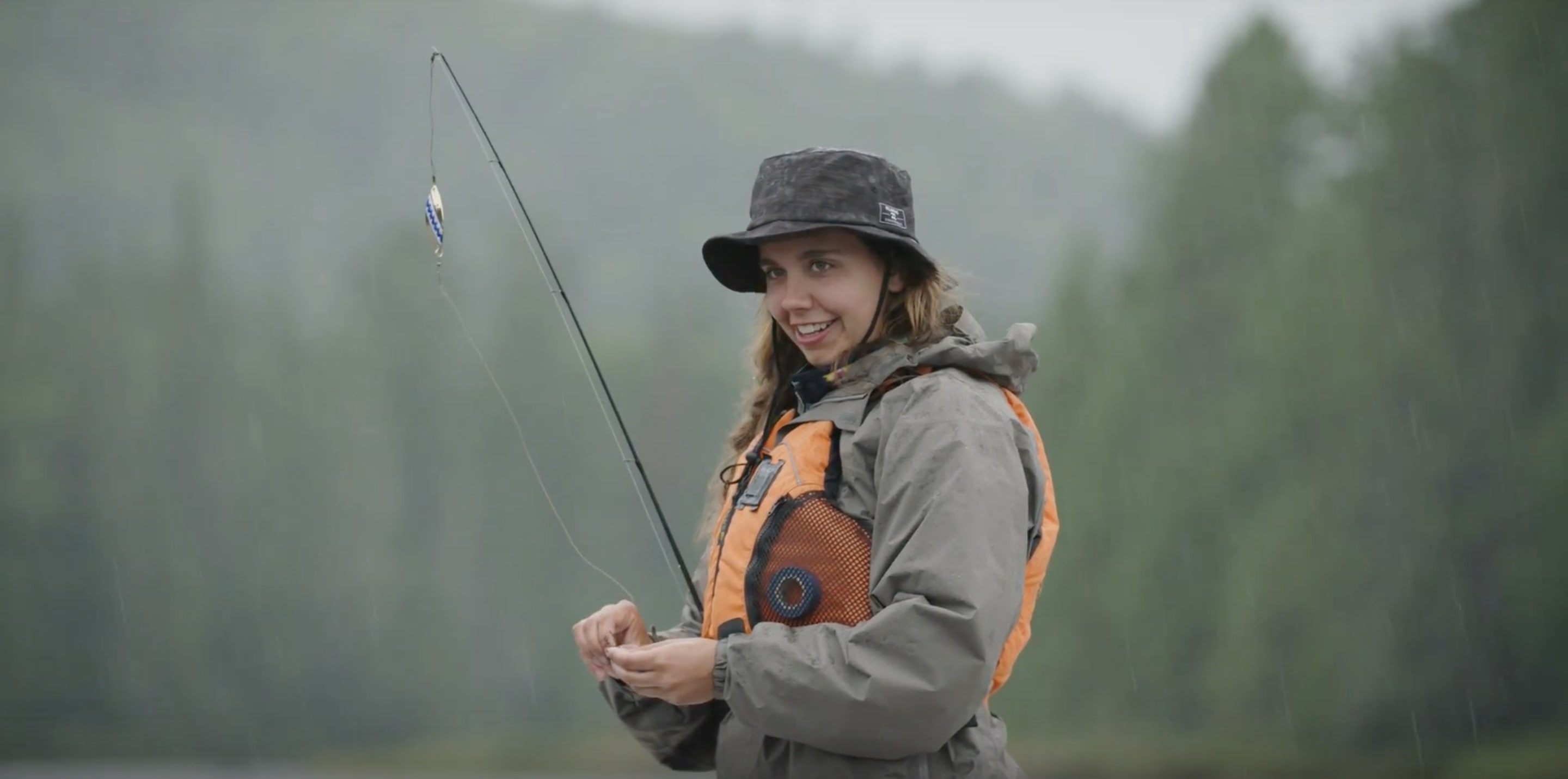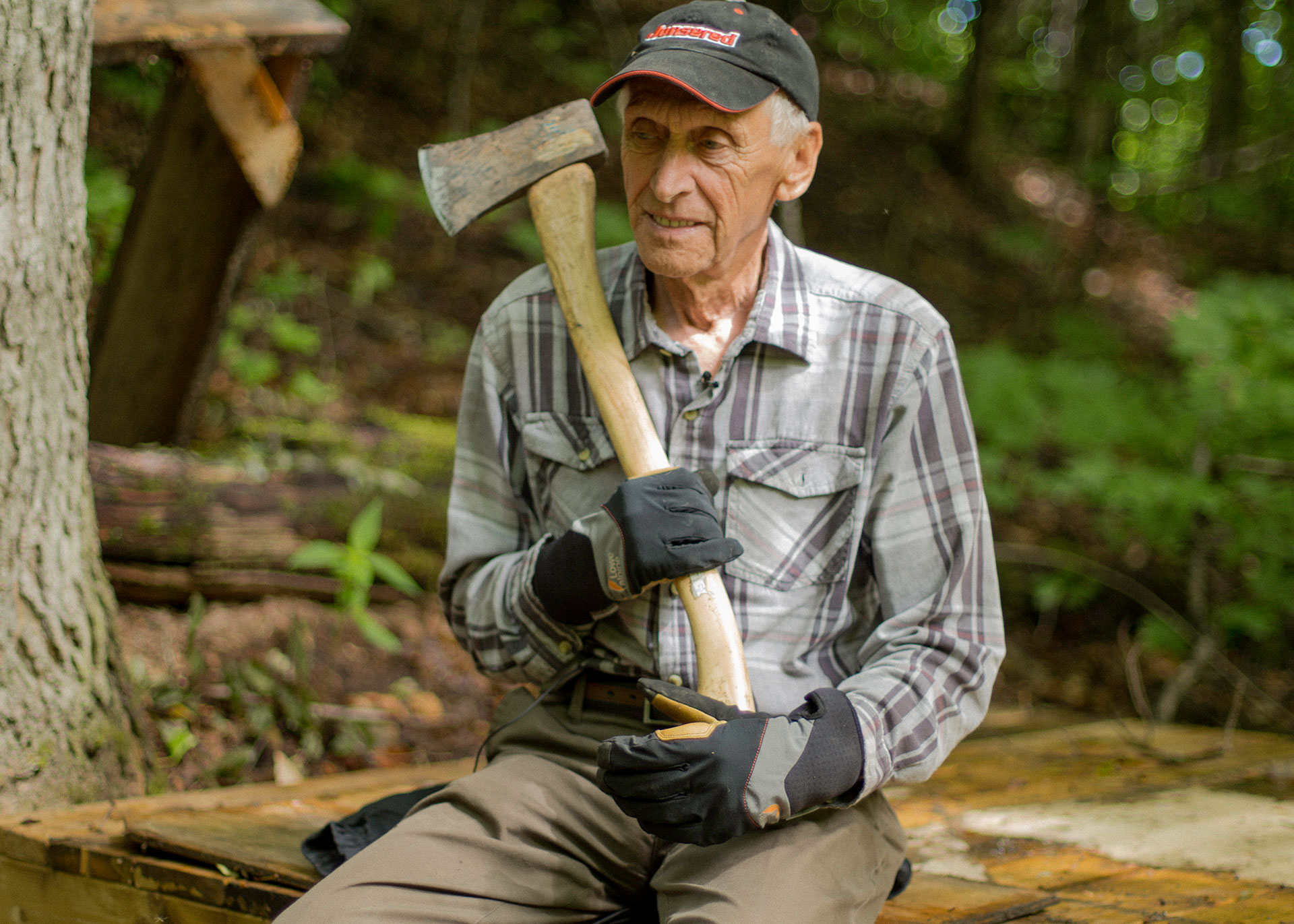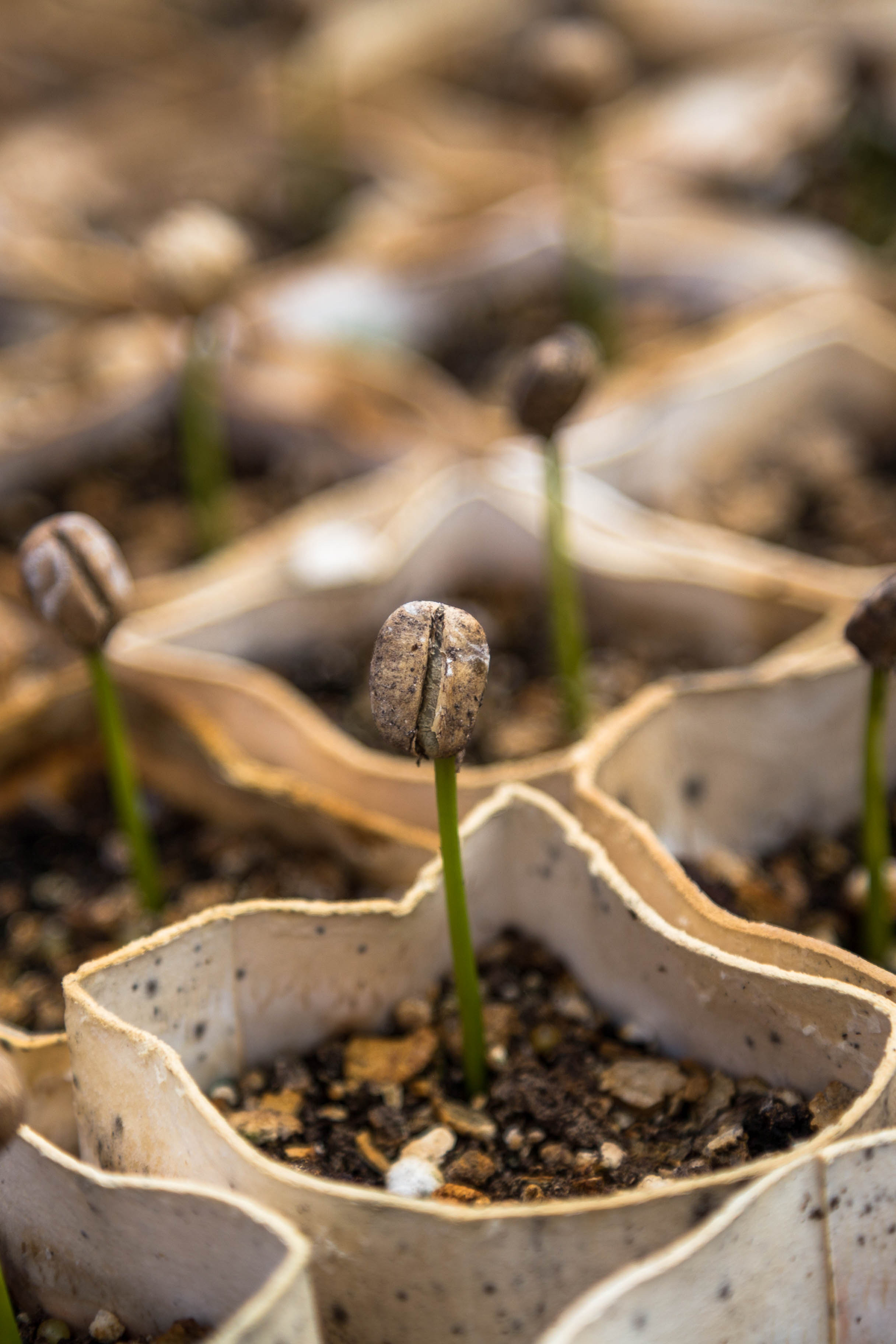BESIDE X LULULEMON
Running by Nature
More and more runners prefer braving wilderness trails rather than roads. A mere whim? No. It’s an impulse written into our DNA, according to scientists.
When runner Lecia Mancini enrolled in environmental science in university, she pictured herself exploring natural parks, collecting water and soil samples, collaborating with forest rangers, and writing adventure guides.
When she graduated, however, she found herself in front of a computer during most daylight hours gathering data and producing reports. “I was always exhausted, frustrated. I just wanted to be outside!” admits the Montrealer, now in her late thirties.
So she took drastic measures to meet this visceral need by becoming a postal worker for two years. Going up and down stairs, walking 12 miles [20 km] per day, exposed to the elements: she loved all of it.
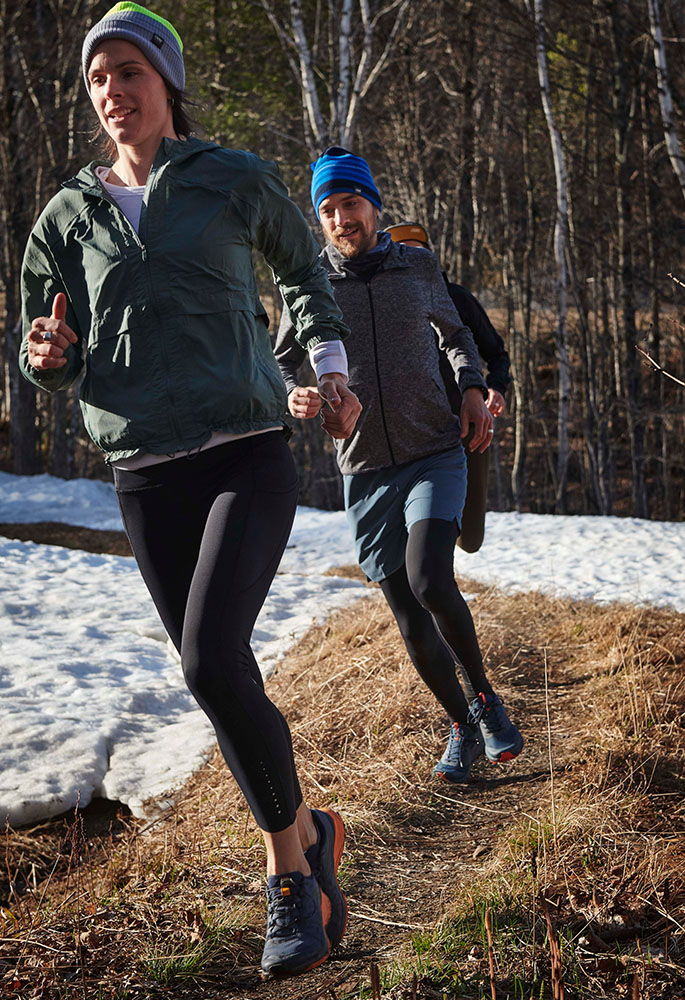
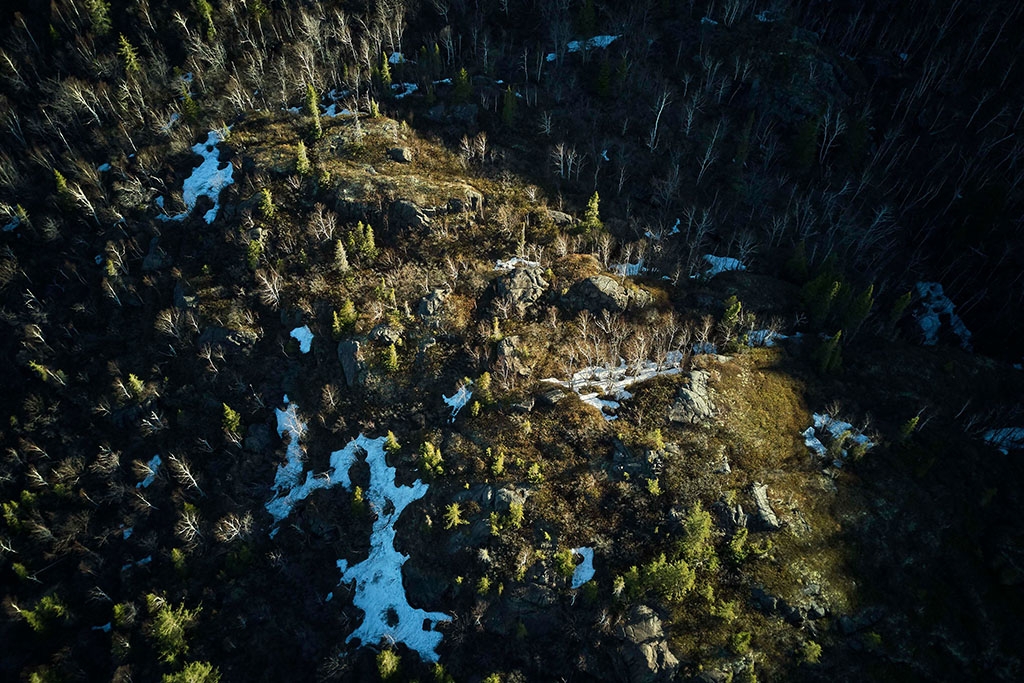
She now works for lululemon and has been trail running since 2015. She joined a community that keeps growing, bringing together people of all ages and backgrounds. The success of the Club de trail de Montréal, which includes lululemon among its partners, is a testament to this sport’s vitality. Having started with a mere 20 or so members in 2014, the club is now over 135 strong, and expanding every year.
All year round (and yes that includes the Québec winter), runners literally go out of their way to be surrounded by trees, rocks, rivers, and mud. While it’s clearly possible—and quite pleasant—to run on Mount Royal, most places best suited for trail running are located dozens of kilometres out of the city.

This call of the wild is something humans feel with great intensity. And, thanks to biologist Edward Osborne Wilson, it has a scientific name: biophilia. The notion that humanity’s irrepressible need for fresh air is intergenerational suggests that it is also somehow genetic.
“For tens of thousands of years, we have been evolving as a species, thanks to interactions that have increased our chances of survival,” explains psychologist Peter Kahn, a professor at the University of Washington. Of these countless interactions, the most vital one has likely occurred between humans and nature. Nature has been our home, our market, our playground, and our means of transportation—over eons. It’s safe to say that we have developed deep, entangled connections with the wild.
“Nature is such an integral part of human beings that when we remove it from our repertoire of daily experiences, our body and soul suffer. Trail running allows us to reconnect with a part of ourselves: the natural world.”
— Peter Kahn
Obviously, we have adapted to our relatively recent urban environment, but that doesn’t mean that we can be fully removed from nature and everything will be okay. Cardiovascular disorders, diabetes, depression, increased risk of mental illness, and trauma have become common conditions in the modern world and are linked to our increased global urbanity. Whether to counter our sedentary lifestyles or to get away from pollution, trail running can clearly be considered a crucial source of respite as well as a tool for public health.
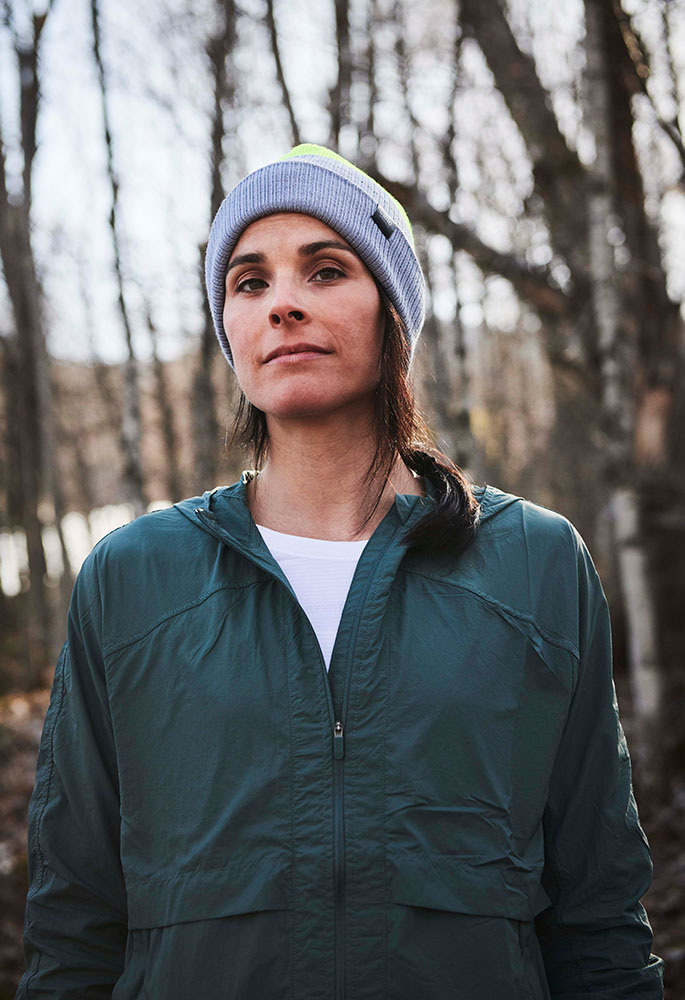

On a trail, it’s impossible to run at full throttle. You have to deal with the mountain, avoid its rocks and roots, watch the ground, and keep an eye out for branches at eye level. Unlike road running, where it’s easy to withdraw into your bubble and emerge only kilometres later, trail running requires a constant awareness of your surroundings. There is also a strong team spirit at play, which surprises runners who are used to roads. There is far less focus on competition times, which leaves room for helping each other and enjoying what nature has to offer.
“I clear my head. I look at the ground scroll by under my feet. It’s a kind of meditation.”
— Lecia Mancini
“When I run along these trails, I often don’t get any signal. It’s the only time in my life when I can break the chain that ties me to my phone. I’m free; it’s wonderful.”
It’s no surprise, then, that trail running has become so popular: it provides an answer to some of the ills of our time. As our lives become increasingly connected, we increasingly feel the need for nature’s presence and, by extension, being in touch with our own human nature.
The more time we spend in it, the more we’ll love it. And the more we’ll want to protect it.
—
Vincent Champagne is a journalist. He is the founder and editor in chief of Distances+, a web magazine devoted to trail racing. He loves running in the mountains.
___________________
LET YOUR MIND RUN
For lululemon, running is a mindful practice that has so much more to do with presence and purpose than it does speed, performance, or calories. Inspired by both lab-proven research and testimonies from runners, the brand creates experiences with and for the running community that invite us to think about what it takes to let our mind run free.
___________________
As part of lululemon’s 40 | 80 Challenge, encouraging members of its community to complete 40 km or 80 km of trail running during the first two weeks of January, our journalist Vincent Champagne is presenting his top 3 trail running itineraries in and around Montreal:
